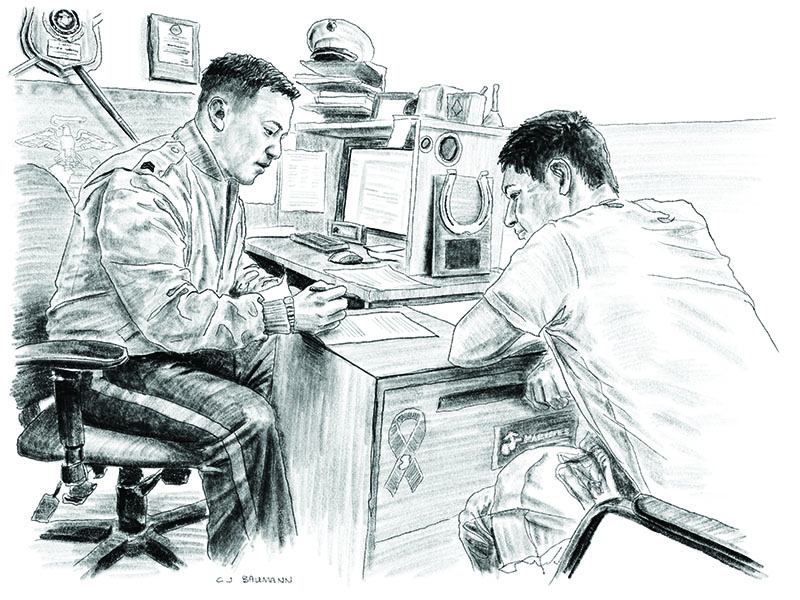
Marine Mindset: The Warfighter Behind the Recruiter
By: Kyle WattsPosted on March 15, 2025
When I think of a Marine recruiter, I am immediately transported to an unfamiliar couch in a flawless office. Motivational posters adorn the walls in an orderly fashion, their tactful propaganda impossible to miss. The thickest book I’ve ever seen is on a coffee table before me, squared and centered in dignified solitude. The Corps’ official seal protrudes brilliantly emblazoned on the cover, juxtaposed against a black title and camouflage hardback. It is a work of history, weathered and revered like a minister’s treasured scripture.
The recruiter sits in a chair on the opposite side of the table. His superbly disciplined uniform gleams with rainbow rows of ribbons on his chest and a blood-red stripe down the seam of his trousers. He wears confidence and charisma like a sleeve of tattoos. Sweat drips down my spine as I consider how many people he has killed. Ten for each ribbon, perhaps? Fifteen if it bears a star? My God, what must a “V” signify? I dare not ask. Undoubtedly, this warrior could slit my throat with nothing more than the knife edge pressed into his khaki shirt sleeve. How many pages of that historical tome must be dedicated to him?
One by one, he arranges a series of small plastic tags on the table. He takes his time, silently inviting me to consider them individually. Each tag is engraved with benefits the Corps has to offer, presumably valued by any prospective candidate bold enough to enter their office. Individual words capture my attention: courage, challenge, discipline, direction. They stir something inside me as I consider my future. The recruiter isn’t offering a chance to discuss the benefits he has to sell. He’s offering a glimpse inside his Marine Corps mindset; a taste of the intrinsic motivations driving anyone who believes they have what it takes to earn the eagle, globe and anchor. Do I?
Fast forward through my time on active duty, my admiration of Marine recruiters remained unaltered. Stigmas and stereotypes persisted, though, depicting an austere and exacting persona of the job. For anyone familiar with Marine recruiters, the images we conjure paint a wholly inadequate picture, portraying mere snapshots in time. The stereotypes, while accurate in some respects, prove dreadfully limited in their ability to capture the entirety of a recruiter’s critical role. What we do not see is everything that led to the scenes we evoke, and everything that comes after, to successfully ship a person off to boot camp. What we do not feel is the highest of highs and the lowest of lows that Marine recruiters experience as they fight and win their battles, day in and day out.
“There is no better visible example of our disciplined warriors than our recruiters,” stated General Eric M. Smith, Commandant of the Marine Corps, in an address to members of the U.S. Senate in April 2024. “We send our very best to recruiting … We value the mission, not only for the immediate results of recruiting the best fighting force for our nation, but also for the professional development and leadership that such rigorous duty instills in a Marine leader.”
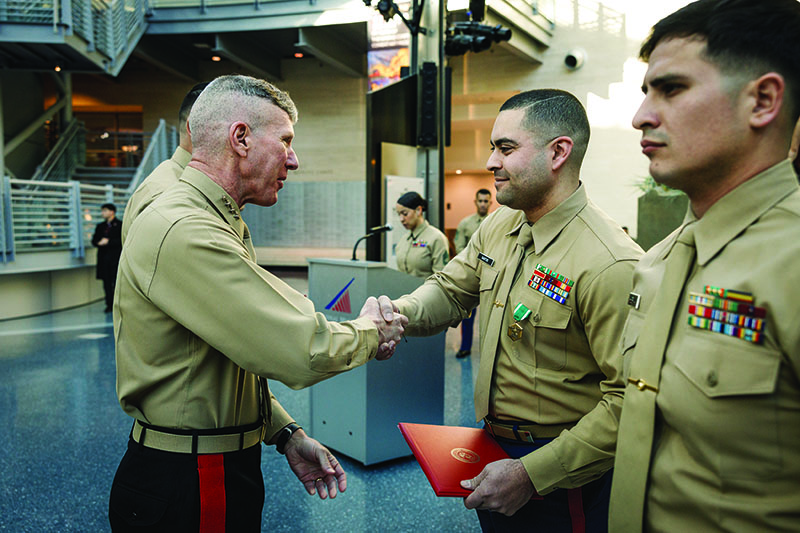
Recruiting could be reasonably argued as the most rigorous of Special Duty Assignments (SDAs) a Marine can receive. Marine drill instructors, combat instrucors and embassy security guards fill out the remaining SDA duties.
More than 4,000 Marine recruiters are currently serving in every community of the United States. This number represents nearly two thirds of the total number of SDA billets available across every duty. While each SDA presents its own set of challenges, Marines on recruiting face an unending and often uncontrollable stream of obstacles to creatively overcome.
“We ask recruiters to do more, and they deliver,” said Sergeant Major Carlos A. Ruiz, Sergeant Major of the Marine Corps, during a recent Leatherneck interview. “They had to work the extra hours. They had to drive further. They did the work … Just imagine having a job where 99 people tell you ‘no’ every day, and you’re just searching for that one ‘yes.’ ”
In his Senate address, Gen Smith recognized some of the modern hurdles recruiters face, citing “labor market challenges, historic lows in qualification rates and lower propensities to join.”
“Nonetheless, we do not ask young men and women to join us, and we do not promise them an easy life. Instead, we challenge them to try out for and earn the privilege to wear the eagle, globe, and anchor.”
Marine recruiters have achieved their accession goals every fiscal year since 1994. Recruiting has always been a hard-fought victory, but the past several years have witnessed Marines waging a herculean struggle against a myriad of complicating factors. Indeed, today one might view a Marine wearing the Marine Corps Recruiting Ribbon similarly to the immediate veneration we bestow on those bearing a Combat Action Ribbon. The outbreak of the COVID-19 pandemic in 2020 created a completely unique set of hardships—one of the most impactful was restricted access to schools.
Even after the bans and barriers were lifted, recruiters encountered the same scarred and harsh new environment we all felt upon venturing back out into the world. Relationships erased by the pandemic years needed rebuilding. Face-to-face and public speaking skills, supplanted by text and social media, needed relearning. Whether through the rising of a new generation, the inward focusing during the pandemic, the end of the Global War on Terror, or whatever other factors may have existed, the population eligible for military service displayed a waning interest in joining.
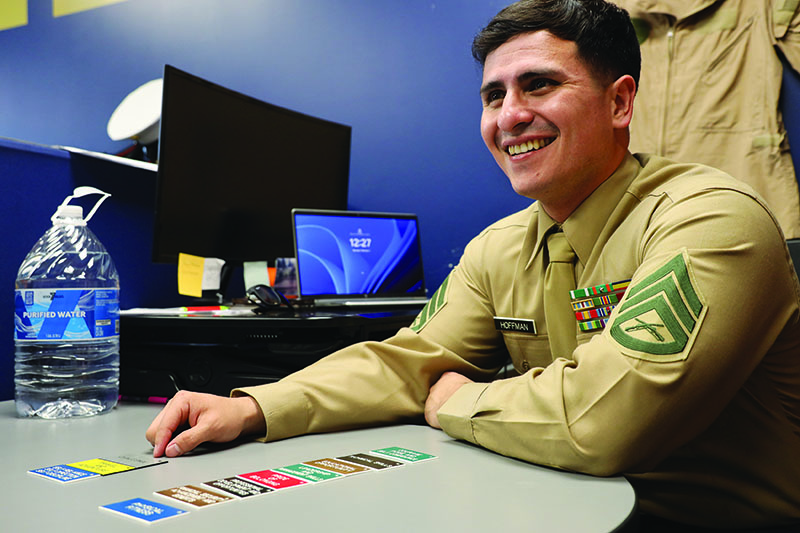
Recruiters confronted another monumental difficulty in 2022: the advent of Military Health System (MHS) Genesis. This new system rolled out Department of Defense-wide with the intent of streamlining a candidate’s medical qualification process, tying directly into civilian medical records systems.
“While it enhances efficiency and transparency by consolidating applicants’ medical histories, it has also created challenges,” said Major Michael Siani, Commanding Officer of Recruiting Station (RS) Dallas, Texas. “Recruiters face delays due to extensive medical reviews and increased disqualifications stemming from previously unreported conditions. This has raised the importance of thorough applicant screening and counseling upfront.”
The end state of MHS Genesis aims to create a more medically ready force with reduced future attrition. Recruiters operating within the system’s guidelines today, however, are confronting the “historic lows” mentioned by the Commandant in medically qualified candidates. Prospective applicants, along with their recruiters, frequently endure months of waiting while the military bureaucracy churns through backlog of medical waivers. To remain successful, recruiters adapt by setting realistic expectations for their applicants and planning well in advance.
Through all of this, Marine recruiters must successfully attract qualified candidates, not only in competition with the other branches of service, but also in competition with the civilian world. Numerous companies across a variety of industries revamped the benefits they offered in the wake of the pandemic while enduring their own setbacks in hiring and retention. Many positions are now remote, higher paying and with flexible options for lateral and upward mobility. Even the Post 9/11 GI Bill, a staple benefit of military service, has been rendered commonplace by companies offering competitive tuition assistance and college education benefits.
Other branches of service stumbled in the face of so much adversity. During FY2022, the Marine Corps persisted as the only branch to meet its recruiting goal, barely surpassing the target of more than 28,600 new enlistments. Again in FY2023, the Corps prevailed while others faltered, surpassing the goal of more than 33,300 new Marines. As a point of comparison, the U.S. Space Force ended that year as the only other branch to meet its recruitment goal of less than 500. The Army, Navy and Air Force adjusted standards, adopted incentives, and even offered tens of thousands of dollars in sign on bonuses. The changes failed to achieve the expected results. In the end, the Marines’ success boiled down to its absolutely tenacious recruiters who would not lie down and refused to quit, while upholding the Marine standard.
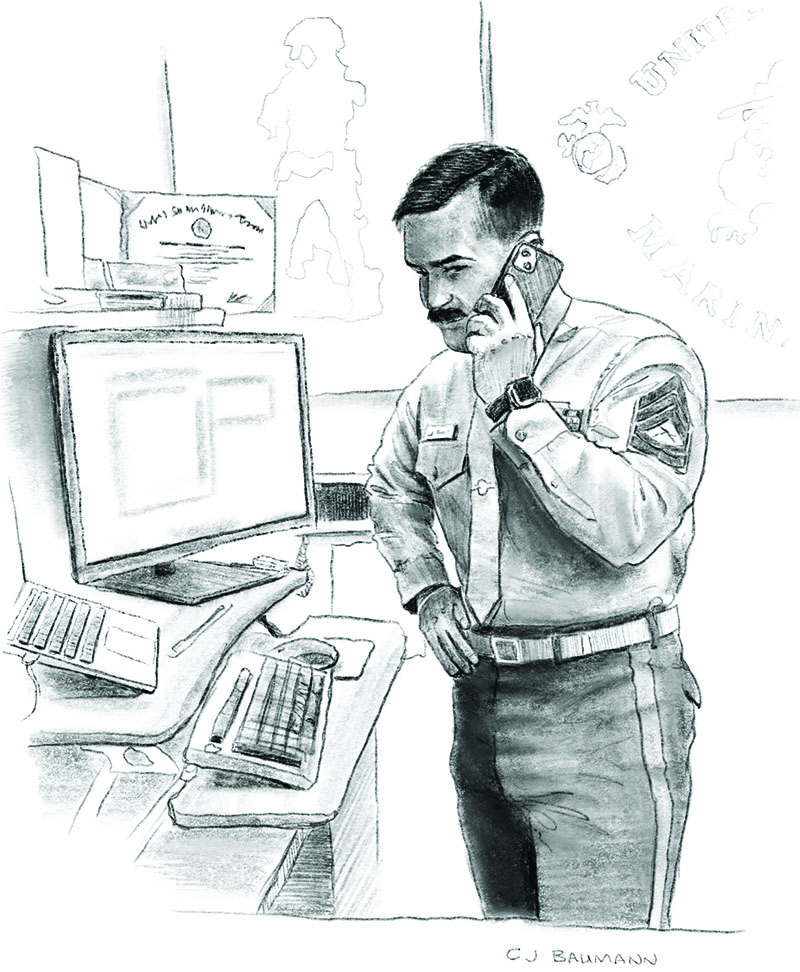
Generally speaking, during the course of a recruiter’s standard 36-month tour, each is expected to contract an average of two candidates per month. In other words, an average of two soon-to-be Marines, called “poolees,” must be completely through the application process and waiting for their ship date to boot camp. Poolees can take an average of 50 to 60 days from the time they begin the application process to the day they ship out, assuming they are not disqualified for any reason at any point along the way. To achieve the numbers each recruiter is required to achieve across a range of categories like gender or education level, recruiters must cultivate a large grouping of committed applicants, all at different stages of the process. To discover and amass their group, recruiters must engage with an even larger portion of the population.
The men and women on recruiting duty vary as greatly in background and military occupational Specialty (MOS) as the vastly different communities they canvass. New recruiters first travel to Marine Corps Recruit Depot San Diego, Calif., for Basic Recruiters Course, a 35-day school teaching the fundamental tools of the trade. In addition to communication and presentation skills and USMC product and procedural knowledge, the course emphasizes the Marines’ core values and success through being a Marine first, then a recruiter.
Graduates earn the 8411 Marine Recruiter MOS and deploy to their assigned district. Marine Corps Recruiting Command conducts extensive demographic research into each region, strategically placing recruiters in locations with the highest probability of success. The Recruiting Sub-Stations (RSSs) in which Marines can land might include the most densely packed urban centers of Los Angeles, Dallas or New York, or the most sparsely populated plains of Kansas, Nebraska or Wyoming.
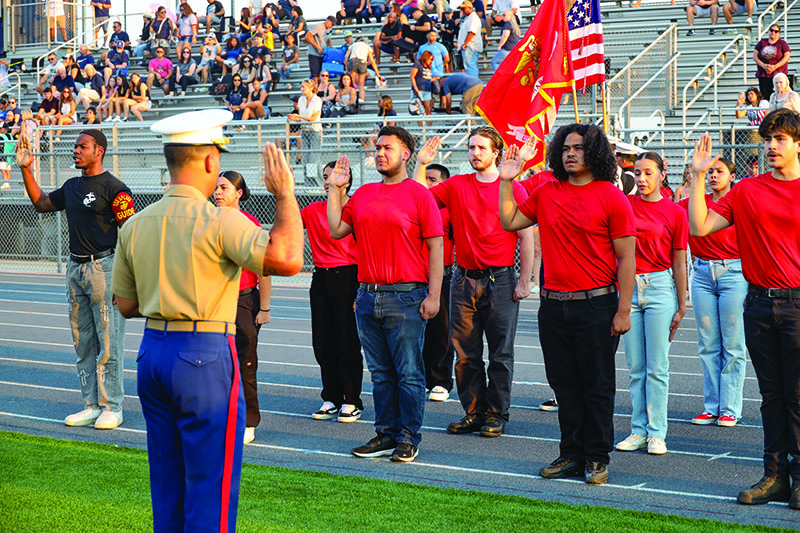
Many Marines volunteer for the assignment or are selected for the duty as a pivotal resume experience and steppingstone for future career advancement. According to the Commandant’s Senate address, a quarter of the Marine Corps’ flag officers were recruiters at some point in their career. Gen Smith served on recruiting duty earlier in his career, as did SgtMaj Ruiz. The most successful recruiters have the opportunity to volunteer for an even larger role within the field, that of an 8412 career recruiter. Career recruiters typically hold the rank of staff sergeant and above and remain on recruiting for the rest of their time on active duty. Less than 600 of these exist within the Marine Corps. They are identified in the field by their unique gold name tags worn on their right breast.
“8412’s are truly the gatekeepers and the standard bearers within the community,” said Lieutenant Colonel Tyler B. Folan, who as a major served as the commanding officer of RS Denver, Colo., from 2021 through 2024. “They are the ones passing on the successful traits, making sure the society remains true. But they are also the subject matter experts, understanding the tactics needed to close with and win.”
RS Denver, one of eight subordinate stations in the 9th Marine Corps District, offers a perfect representation of a broad geographical spectrum. During Folan’s tenure, 40 to 50 recruiters manned 13 separate RSSs across the states of Colorado, Wyoming, South Dakota and Nebraska. The largest of these sub- stations included areas such as Colorado Springs, home of the U.S. Air Force Academy, where six Marines covered the city. Four RSSs covered Denver and its surrounding suburbs. By contrast, only seven Marines operated in the entire state of Wyoming.
“Recruiting is such a rewarding job because you’re the ambassador of our Corps that everyone is looking for,” Folan said. “You could be working in very isolated areas that, especially during COVID, may not have seen Marines in weeks, months, or years. It’s humbling because our recruiters are the face of the Marine Corps. They have to do right at all times, be resilient, and have a winning mindset that ensures our Corps tradition of success continues.”
Recruiters master their assigned community and penetrate it like a savvy beat cop. They develop key relationships and learn the streets. Local high schools generate the bulk of a recruiter’s applicants and conversations. This target population is rightfully shielded by a host of “influencers”; parents, teachers, guidance counselors, football coaches, etc. A recruiter’s primary struggle is to overcome the perception that the community’s youth are merely a number he must achieve. Influencers routinely terminate initial phone calls with a “no,” “no thanks,” “he’s all set,” or simply a wordless “click” on the other end. Some berate the recruiters or use profanity-laced insults. The tools each Marine brings from Basic Recruiters Course guide them in their practice, but in the end, success boils down to each individual finding his or her own way to personally connect with the people. The most successful of these men and women integrate themselves so thoroughly into their communities that they secure not only the influencers’ trust but cement the Marine Corps as the first choice and only viable option for military service.
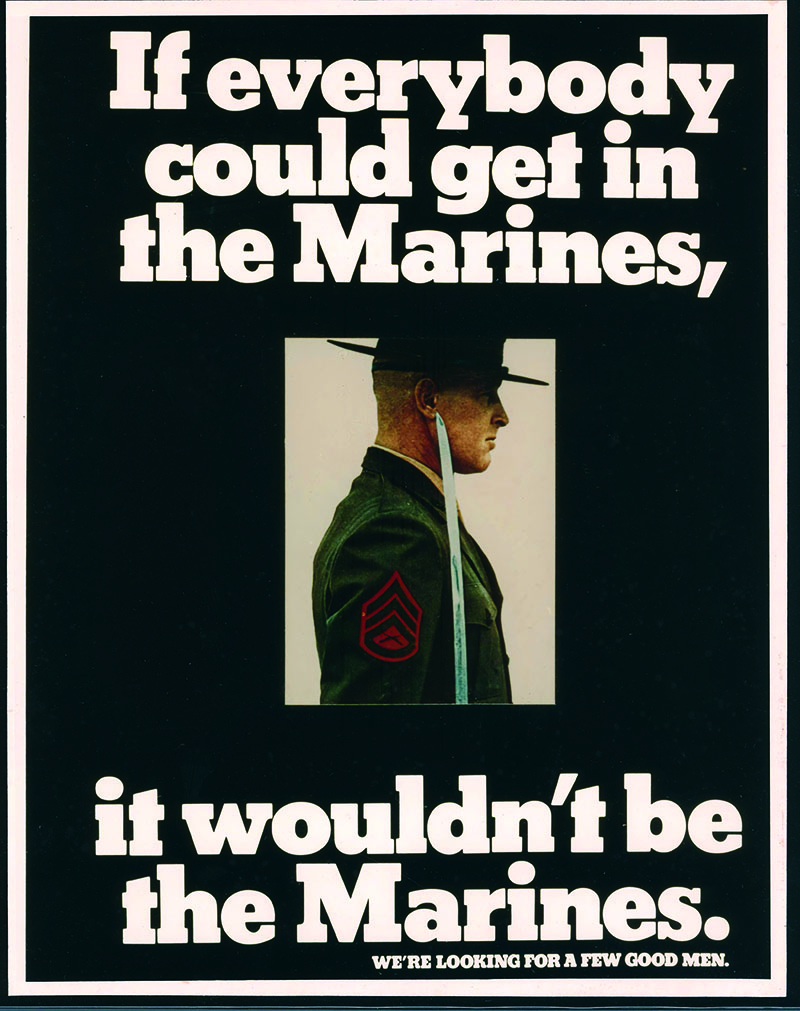
Each fiscal year, Marines across the nation compete for recognition as Recruiter of the Year. Competition is stiff, even within each RS. Gunnery Sergeant Eduardo Villalobos, for example, stood out last year from RS Orange County, Calif., earning the rare distinction as a “centurion,” a recruiter who successfully contracted 100 men and women into the Corps. The achievement helped Villalobos earn Recruiter of the Year for his RS. Each RS submits their top recruiter to compete against the others in their district. Each district then competes for the top spot in each region, either east or west. Finally, the winning Marines from each region go head-to-head for the highest distinction as Recruiter of the Year for the entire nation.
Staff Sergeant Tyler J. Hoffman won out as the top performer for RS Dallas, Texas, the 8th Marine Corps District, and over every other Marine submitted from the western region, achieving the outstanding recognition as the national runner up. Hoffman entered recruiting in 2022 after five years on active duty as a small arms repairman. Working out of RSS Mckinney, Hoffman established himself as a dependable leader, consistently caring for each person he enlisted, and was meritoriously promoted to staff sergeant. Hoffman volunteered for recruiting despite the stigmas that existed regarding the assignment.
“There’s nothing easy about the Marine Corps, but I didn’t join to do something easy,” Hoffman said. “Recruiting has definitely been the most difficult duty I’ve had, but it’s something I’ve always pushed to be the best at and that has kept motivating me. For me personally, the biggest challenge I had was learning about time management when I first got on this duty. It feels like you have 1,000 things to do every day, and there’s only 24 hours. You have to accomplish those things while finding the time to give back to your family as well.”
Gunnery Sergeant Emmanuel F. Santos, assigned to RS Springfield, Mass., earned the prestigious honor as the nation’s Recruiter of the Year for FY2024. Santos arrived on recruiting as a sergeant, working out of RSS Waterbury, Conn. Promotion to staff sergeant arrived shortly after assuming his role, and a meritorious promotion to gunny less than one year after that. Fast approaching the end of his 36-month tour, Santos is preparing to return to the fleet as a staff non-commissioned officer within his Motor Transport MOS.
“Talking to civilians, some of the things they say or do, you really have to hold your tongue,” he stated, reflecting on his recruiting tour. “You have to hop off the pedestal and see them eye to eye and allow them to say certain things. This experience gave me a lot of patience, but it also humanized me a lot. It took me away from the “oorah” motivated devil dog society where I almost forgot I was a person. I truly believe once I get back to the fleet, along with the patience, I’ll be able to handle situations a lot more professionally and dig down to the roots of the problem. I’ll be able to swallow my ego and talk to my subordinates the same way I talk to my peers or my supervisors.”
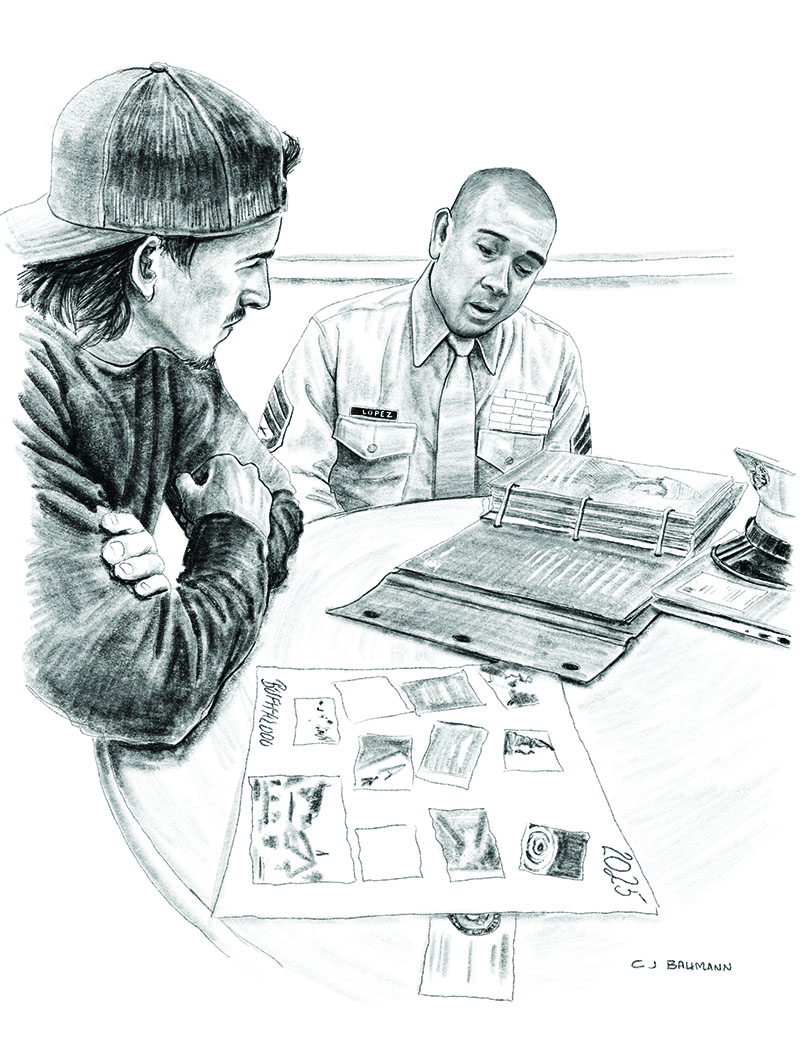
According to Santos, the greatest challenge he faced throughout his time as a recruiter has been applicants’ failing scores on the Armed Services Vocational Aptitude Battery (ASVAB). Medical waivers wrought by MHS Genesis also caused hiccups in the process, but ASVAB scores delayed many of his prospects. In three years, Santos developed files on nearly 500 applicants who sat with him and began the enlistment process. Out of that number, only 97 successfully left for boot camp, many of the remaining number derailed by the entrance exam. Credit can be heaped not only on the recruiters for their work, but also on some of the youth today in their relentless pursuit of military service. One of the 97 poolees Santos enlisted began the process under a prior recruiter. Over the course of more than a year, he failed the ASVAB six times before finally passing under Santos’ mentorship and heading off to boot camp. He is now a successful United States Marine.
Recruiters like Santos and Hoffman take the initiative to sway the outcome of every contributing factor, even those seemingly beyond their control like medical waivers and failing test scores. Both have spent hours working in their local schools conducting youth fitness programs, providing career seminars to give teachers a break from lectures, attending Parent Teacher Association meetings and helping with community service projects.
“To have that good relationship with the schools you have to give and expect nothing in return,” Santos said. “You have to show them you’re not just here to take from them. There aren’t many schools where that’s an easy thing to accomplish but establishing that presence is very important. When they know you are genuine, if someone even mentions the word ‘military,’ you are the first recruiter they think of. Establish yourself as the recruiter to go to and, in their eyes, there is no other branch.”
“When I go talk to individuals, I want them to know who Staff Sergeant Hoffman is,” Hoffman echoed. “I want them to know that I’m the Marine.”
The most adept recruiters accomplish the feat of integrating into their community and earning influencers’ trust over the first year or so of their tour. The end of this time frame also coincides with the beginning of a continuous stream of former poolees, now Marines, returning home on leave after boot camp. Newly transformed and more motivated than ever, these individuals provide a further boost to a recruiter’s community status and an influx of referrals from friends who witness their transformation and are interested to know how that experience might look for themselves.
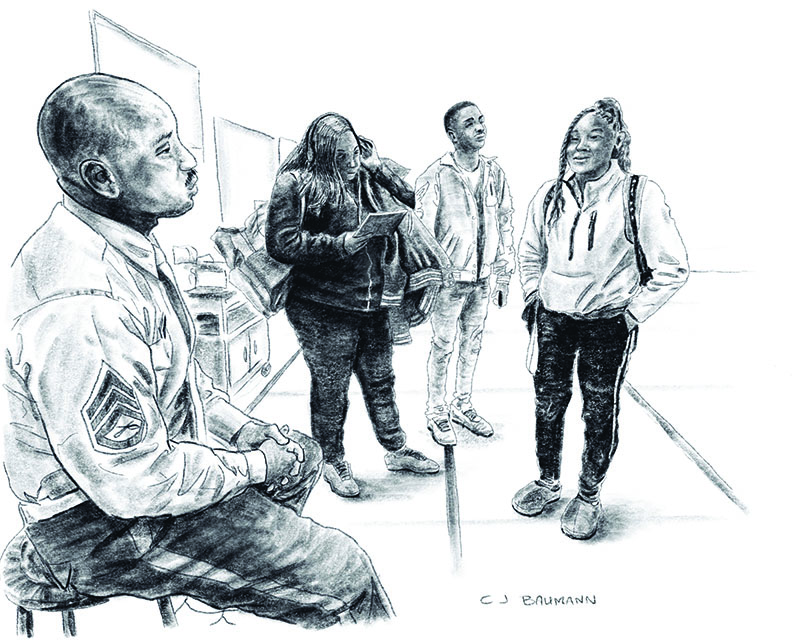
“The most rewarding thing is seeing the end goal after they enlist,” said Hoffman. “I have individuals who have never run before in their life and fail the initial strength test. Working with them and training with them to get passing scores, seeing them go to boot camp and come home after 13 weeks and seeing that transformation; those are definitely the most rewarding moments, and I look forward to those, seeing the lives I have helped change and impacted.”
To impact a life is a lofty goal, idealistic or unrealistic for many jobs one might perform. Recruiters do not have this problem. Anyone who has earned the title of “Marine” understands exactly how that decision impacted the trajectory of their life. Recruiters, like missionaries, shine their gospel light to the ends of the nation, inspiring men and women to serve and setting them down the path.
“It has been an honor to help these kids and be a part of their success story,” Santos added. “It is absolutely crazy what some of them have had to go through at such a young age. Some of their stories have put me to tears right in front of them. One of the hardest things is when the process doesn’t go well, and they can’t join. They’ve been through so much and they still get disqualified, whether by medical or not passing the ASVAB or whatever the case. But, it still gives me a chance to be part of their lives and help them out, whether that be by helping them into a different branch or just being here for them as a person to have their back.”
Santos reflected on the highlight of his time in recruiting, creating a new path for one youth to follow. Driving down the same street his recruiting office was on, Santos noticed a teenager standing along the side of the road in the pouring rain holding a bag full of aluminum cans. Santos pulled over next to the teen, identified himself as a recruiter, and asked the youth to come with him to the office.
“He just dropped the bag and got in the car. I asked him how old he was, and he said 19. I asked him, ‘Why are you selling cans? What’s really going on here?’ He told me his mom sold their house and left him homeless. He was now living with his father, who was a drug addict. I said, ‘I’m going to ask you one question. If you allow me, can I help you become a United States Marine and get the hell out of here?’ He just said, ‘you can try, but I doubt it.’ ”
Santos drove to the office and administered a practice ASVAB. The teen passed with an excellent score. They proceeded to a storage shed where the teen lived with his father to retrieve his social security card and birth certificate. Over the next three weeks, Santos arranged all the paperwork, testing and medical screening. He purchased new clothes for the teen to travel to the Military Entrance Processing Center, where he was deemed medically qualified. The very next day, Santos shook the young man’s hand a final time as he departed for bootcamp.
“After that moment, I 100% thought to myself if this whole recruiting thing goes to crap, that moment right there will be one I treasure forever.”
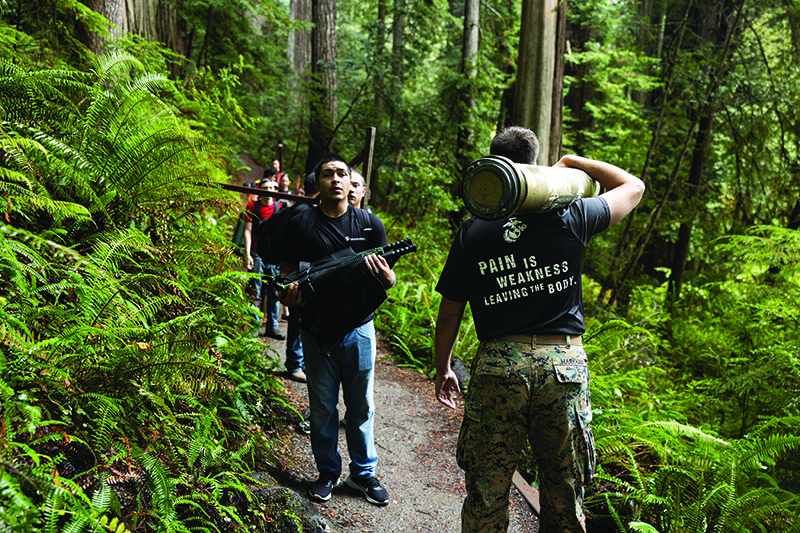
The Corps’ successful recruiting campaign in FY2024, combined with historic retention numbers of first-term Marines, enabled 600 poolees awaiting bootcamp in 2024 to start in 2025, thus boosting FY25’s accession numbers before the fiscal year even began. The Marines on recruiting will not allow this as an opportunity to breathe or be complacent, however. The Marine Corps mindset was planted within them since they first engaged their recruiter long ago, cemented through their transformational experience in bootcamp, and matured through years in the fleet. The spirit forged in places like Belleau Wood, Iwo Jima, or Hue compels today’s warfighters in the same way to seize and exploit the initiative.
No matter what challenges the future may hold, Marine recruiters will continue winning. They execute their duty with pride in their awesome responsibility, enduring whatever hardships or busy work can be thrown at them for the honor of shepherding new Marines into the fold. Every civilian who walks through their door is looking for a new way. The recruiter illustrates for them the world of possibilities available, if they are willing to put in the work.
“Recruiting duty, for me, dealt more with the human being side of things,” SgtMaj Ruiz reflected. “That part of the job is pretty awesome. You open doors for people to come through. They can do with the opportunity what they will, it’s up to them. The obstacles are still just as tall for people to make of it what they will, but the point is you open up the door, for some people, to change the entire dynamic of their family history. I am a naturalized citizen, born in Mexico. A recruiter opened the door for me.”
When I think of a Marine recruiter, I am immediately transported to an unsettled and aimless life, stalled in my past and ambivalent about my future. The recruiter sits opposite of me confidently smiling. I have no idea what I want in life, but I know I want whatever he has. I hope desperately that somewhere locked inside of me I have what it takes. Something tells me this Marine holds the key.
Author’s bio: Kyle Watts is the staff writer for Leatherneck. He served on active duty in the Marine Corps as a communications officer from 2009-13. He is the 2019 winner of the Colonel Robert Debs Heinl Jr. Award for Marine Corps History. He lives in Richmond, Va., with his wife and three children.
Artist’s bio: Maj C.J. Baumann is the logistics officer for 8th Marine Corps District in Fort Worth, Texas. He holds the FMOS of 4606 (combat artist) where he contributes to historical documentation efforts of the Marine Corps Combat Art Program under the National Museum of the Marine Corps. He has created artwork for the 24th and 26th MEU, MARSOC and TBS. He created the official portrait for 38th CMC.




